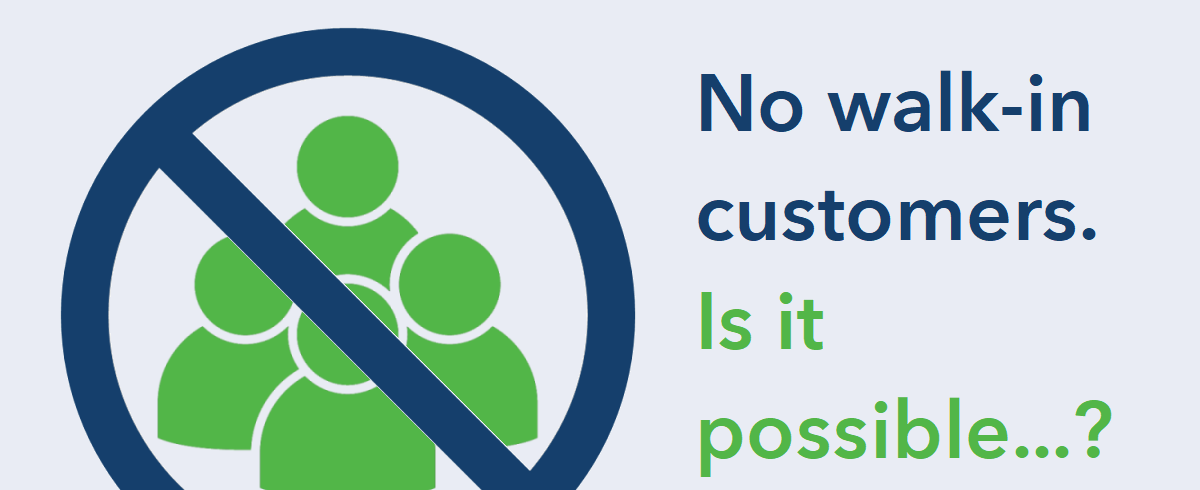As utility offices begin to reopen after being closed to the public due to COVID-19, I’ve heard several utility managers lament not being able to stay closed to the public. This is understandable, as walk-in customers often take up more time from customer service reps than is required to simply complete the transaction they came to the office to accomplish. I’ve long advocated for utility offices to do all they can to limit walk-in payments, but completely closing to the public goes a step further.
Closing to the public permanently
Before you totally dismiss the idea of closing to walk-in traffic as being totally inconceivable, you should know that many private utilities already don’t allow walk-in customers. With that in mind, what would it take to permanently close your office to the public?
There are three primary functions customers come to your office for – making payments, applying for service, and resolving questions about bills. Let’s examine each of these in order of the easiest to solve first.
Resolving questions about bills
Answering questions about a customer’s bill is the simplest task to solve without face-to-face contact. Even if you don’t have a customer portal, most inquiries can be resolved over the phone. If you do have a customer portal, you can definitely reduce the amount of time your customer service staff has to spend answering customer inquiries.
The three most common questions in any customer service environment – how much is my bill, when is it due, and did you receive my last payment – all are easily answered by a customer portal. Answers to additional inquiries regarding usage patterns and billing history should also be answered by your customer portal.
Applying for service
Many utilities have implemented online application processes, primarily as a convenience for customers. However, there is no reason an online application process can’t fully replace in-person applications.
In addition to requiring all of the pertinent demographic information, online applications can also require the user to upload photo ID and proof of occupancy – closing documents or a rental agreement. Most utilities use these documents to satisfy the requirements of their Red Flags Rule policy to guard against fraudulent applications.
Making payments
Hopefully your utility already takes advantage of many of the payment methods to limit walk-in payments – bank drafts, mail payments, online bill pay, and IVR phone payments. Even with all of these options in place, you probably still have a segment of your customer base who are accustomed to paying in person. How can we solve that dilemma?
Customers who insist on paying in person expect to pay one of three ways – cash, checks (or money orders), and credit cards.
Check and money order payments are the simplest form of payment to eliminate the need for a cashier. All that’s required is a secure lockbox where your customers can drop off check payments and go on about their day.
You can eliminate cashier interaction for credit card payments by installing a kiosk in your lobby. Rather than an expensive ATM-type kiosk, this can be as simple as a retired desktop computer configured to only access your online bill pay site. Hopefully, once your customers realize how easy it is to pay by credit card this way, they will do so from home next time!
Cash payments are clearly the biggest obstacle to completely doing away with in-person payments. Some utilities, especially in smaller communities, have an arrangement with a local bank whereby customers can pay at the bank. Others contract with Western Union, or a similar service, to allow your customers to pay with cash at local stores. While neither of these may be ideal solutions, remember many of your customers found a way to pay while your office was closed to the public due to COVID-19!
WaterPro 2020 Virtual Conference
Before it was canceled due to COVID-19, I was scheduled to present at WaterPro 2020 in Phoenix, the annual conference of the National Rural Water Association. WaterPro 2020 will instead take place as a virtual conference, and I will be one of the speakers, presenting Improving Revenue Collections for Utilities at 9:00 am EST on Tuesday, September 15.
If you would like to attend my presentation, you must register for the conference, but the good news is registration is free! You must register for each session you wish to attend, so be sure to select the 8:00 am (times on the registration website are Central time) presentation on Tuesday. You can register for the conference here.



